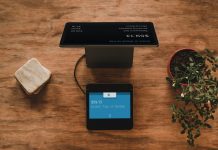As businesses expand globally, the competitive nature has brought about many innovations in the way people do business. Gone are the days of focusing only on innovating products and pushing sales. Today, companies rely heavily on the customer to grow their business, and they need a customer relationship management (CRM) platform to ensure they provide the best customer experience possible.
This customer-centric model has increased the demand for CRM platforms like Salesforce. The universal compatibility and sheer number of features make Salesforce the go-to for many businesses, but this simplicity and convenience come at a price.
Salesforce security has become necessary because cyber attackers have been known to exploit non-secure Salesforce implementations to access sensitive customer and business data.
What is Salesforce Security?

Cyberattacks have increased over the years, with 40 billion records breached in the first half of 2021 alone. It continues to be a challenge for businesses as they navigate the somewhat unfamiliar landscape of remote or hybrid work. Now that employees are mostly off the premises, data security has become more challenging and complex.
This is where a security model comes in. It helps businesses identify and address the weak links in data security systems. The Salesforce CRM platform comes with a data security model with four levels of protection: organization-level, object-level, field-level, and record-level protection.
These four levels provide appropriate security frameworks for Salesforce data that are divided into three main structures, namely, objects, fields, and records. Overall, this model protects information from an organizational level to each record.
In a nutshell, the security model looks like this:
1. Organization-level security
Security at the organization level involves identifying and vetting who has access to the platform and where and when they could directly connect to it.
Admins can configure access permissions by restricting IP addresses and limiting access times for all or a specific number of users.
2. Object-level security
This level manages who has access to specific objects within the platform. Object-level access permissions can be activated for specific domains, or admins can provide several accounts for a single profile.
3. Field-level security
User access to fields can be managed through the use of user-profiles and authorization sets. This level typically applies to certain users who need limited access to an object. It limits what users can see or modify within objects or fields.
4. Record-level security
Also known as record sharing, it controls what records a user has access to. Controlling access is done via manual sharing, organization-wide redirects, sharing rules, and role hierarchy.
Best Practices for Securing Your Salesforce Account
As a premier CRM platform, Salesforce provides a set of controls to help you determine the best type of security for your organization. Below are a few recommendations on how to keep sensitive customer and sales data secure and your Salesforce org as healthy as ever.
1. Multi-factor authentication (MFA)
Multi-factor authentication is a common security protocol for most businesses today. Salesforce has made it a mandatory measure for all accounts as of February 2022.
It adds an extra layer of security for individual accounts by confirming every login attempt on another device set by the user before it proceeds.
2. Session Restrictions
This allows company admins to restrict access to the platform, allowing users to log in only when connected to their corporate network or via a VPN. It also allows you to limit usage times and set session-specific settings for a specific user or group of users, especially when performing sensitive tasks like AUTH providers and certificate management.
3. Salesforce Health Check
Helping with your regular security assessments, the Salesforce Health Check utility identifies potential vulnerabilities in your salesforce implementation.
It provides a current score with a detailed report of what settings you need to check and modify as needed. It’s highly customizable, so you could use the utility to get a predetermined baseline or set it to be as strict as possible if required.
4. Salesforce Shield
This is an additional level of security to what Salesforce already provides as standard. If you want to enhance organization-level access security, this is a recommended add-on. It boasts three main features that add a layer of security to your implementation:
- Event monitoring allows you to track multiple event types and view, filter, and download event logs via the Event Log File (ELF).
- Shield platform encryption extends the encryption standard to 256-bit AES for use in a variety of encryption schemes for different use cases.
- Field audit trail sets strict audit requirements by tracking a wide variety of objects.
A Continuous Endeavor
With Salesforce being proactive in providing you with security measures to protect your data from security vulnerabilities of every nature, there’s no excuse not to arm yourself against potential cyberattacks.
What’s vital here is determining which aspects of security are handled by the platform and which are handled by you. There is no one-size-fits-all security solution, and how you protect your organization and its data is ultimately up to you.
Securing your Salesforce account and your overall data, are ongoing mission. You may be successful at times, and sometimes you may fall short. The key is in recognizing the value of security and assessing your “readiness” frequently. Knowing this, you can rest easy knowing that your data is safe.
Read Also:
- Improve Your Sales By Using Both Printed & Digital Marketing
- How To Be A Successful Salesforce Developer in 2023?
- Essentials of Salesforce DX in Automating and Simplifying Workflow
Author: Edward Huskin














